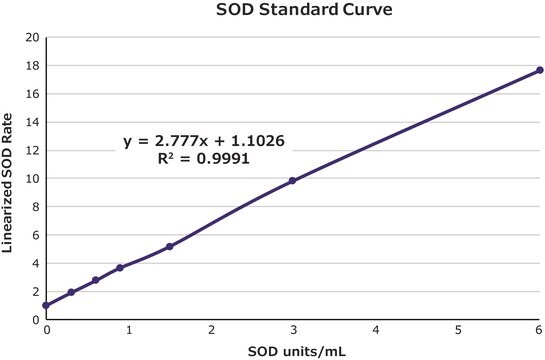CAT100
Catalase Assay Kit
sufficient for ≥100 tests enzymatic, determination of catalase activity in tissues and cells
Synonym(s):
Catalase Activity Detection Kit
About This Item
Recommended Products
Related Categories
General description
Application
Biochem/physiol Actions
Features and Benefits
- Useful for determining catalase activity - may be used in various tissues and cells
- Simple, optimized protocol - A simple colorimetric assay for analysis of peroxisome enrichment and catalase activity
Suitability
Principle
Unit Definition
Preparation Note
Kit Components Also Available Separately
Signal Word
Danger
Hazard Statements
Precautionary Statements
Hazard Classifications
Resp. Sens. 1
Storage Class Code
12 - Non Combustible Liquids
WGK
WGK 1
Flash Point(F)
Not applicable
Flash Point(C)
Not applicable
Personal Protective Equipment
Choose from one of the most recent versions:
Already Own This Product?
Find documentation for the products that you have recently purchased in the Document Library.
Customers Also Viewed
Articles
The isolation of subcellular fractions by centrifugation is a commonly used technique and is widely applicable across multiple cell and tissue types. Because organelles differ in their size, shape, and density, centrifugation can be easily employed to separate and purify organelle fractions from gently homogenized samples.
Oxidative stress is mediated, in part, by reactive oxygen species produced by multiple cellular processes and controlled by cellular antioxidant mechanisms such as enzymatic scavengers or antioxidant modulators. Free radicals, such as reactive oxygen species, cause cellular damage via cellular.
Our team of scientists has experience in all areas of research including Life Science, Material Science, Chemical Synthesis, Chromatography, Analytical and many others.
Contact Technical Service





